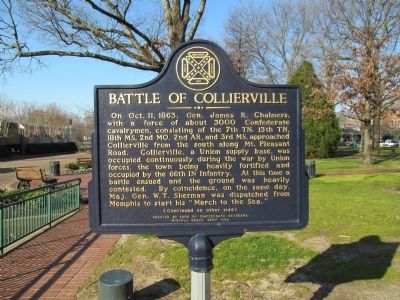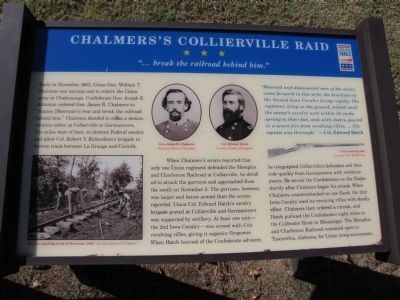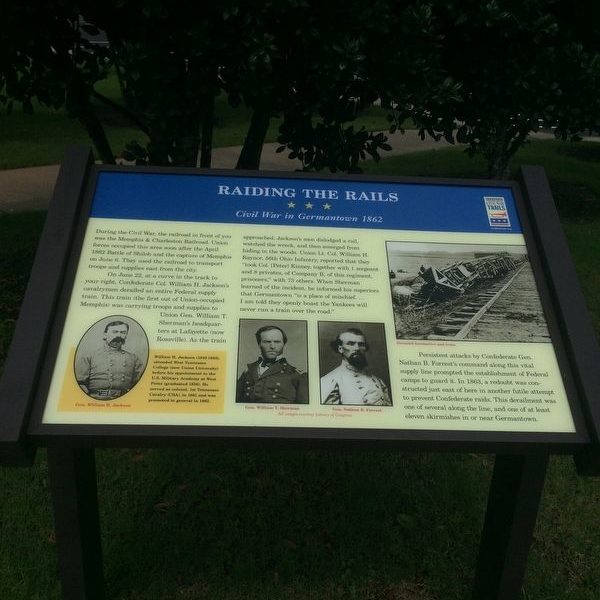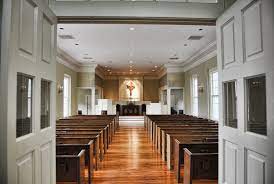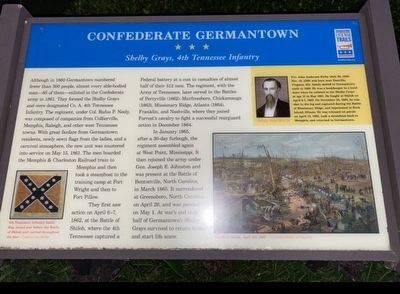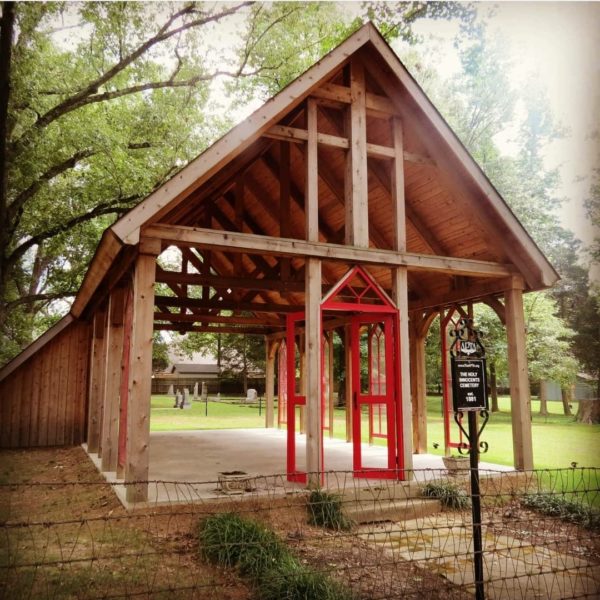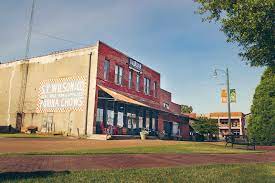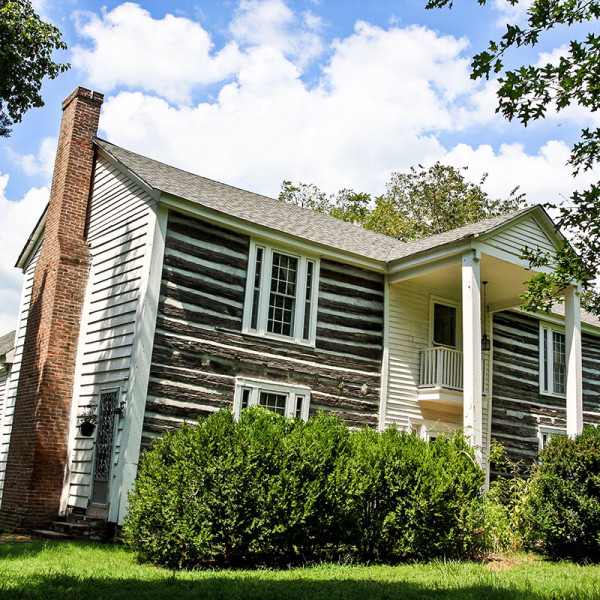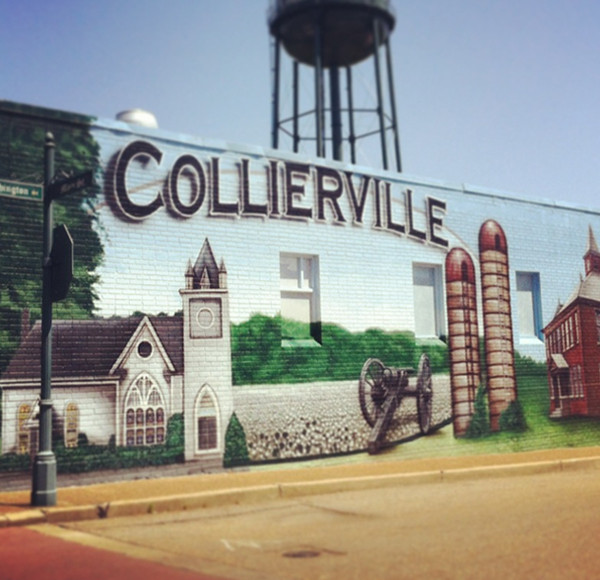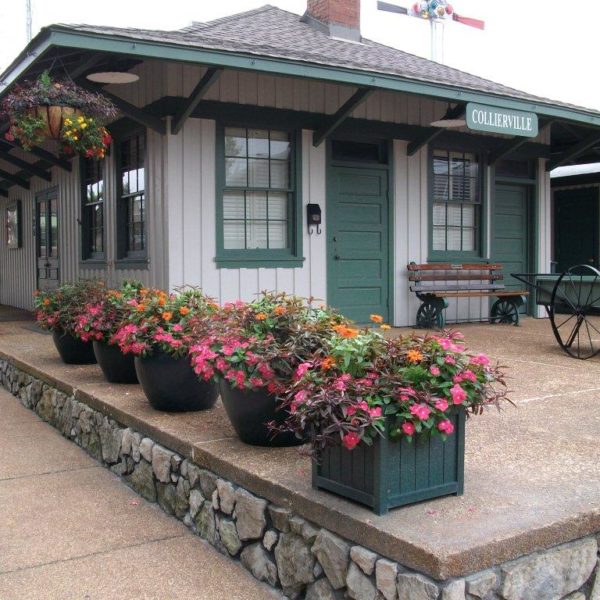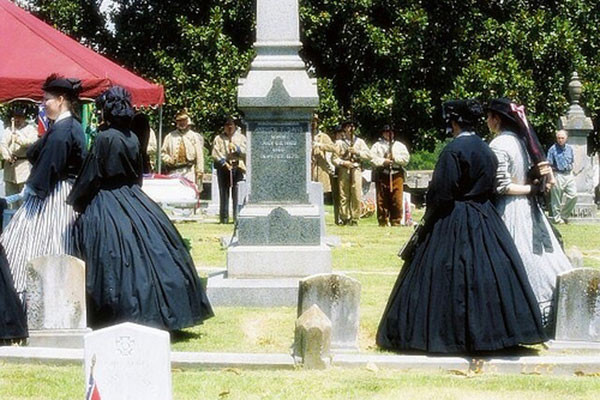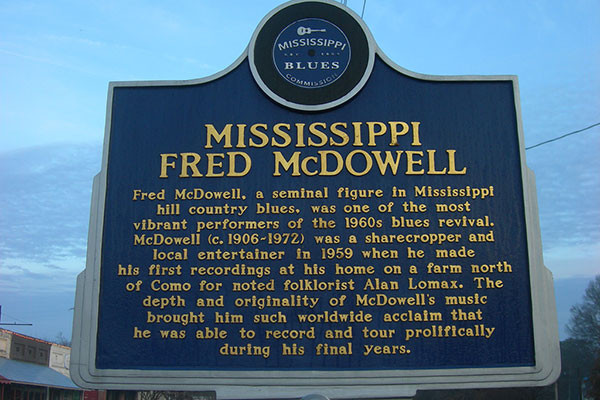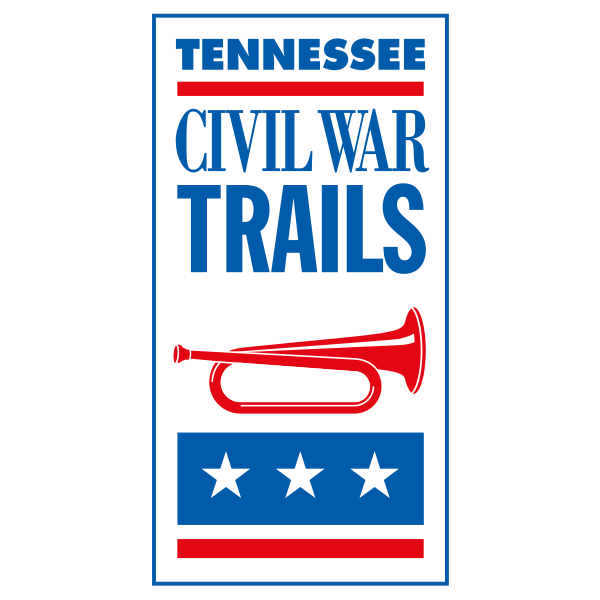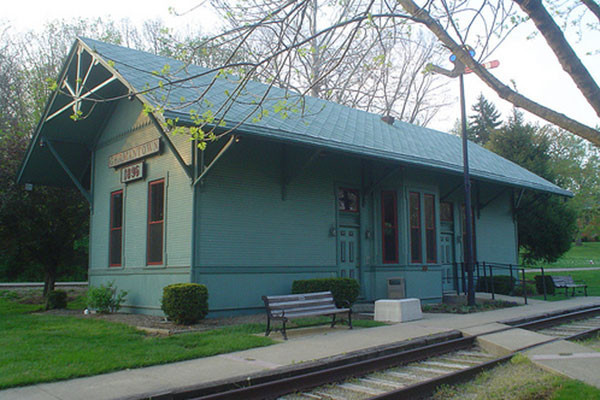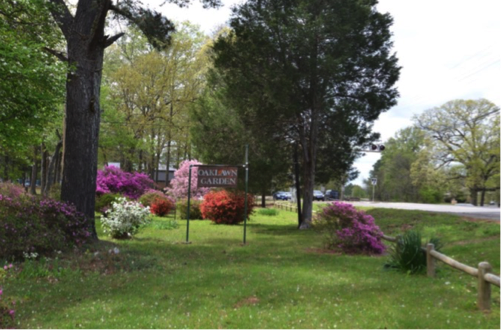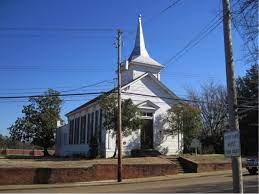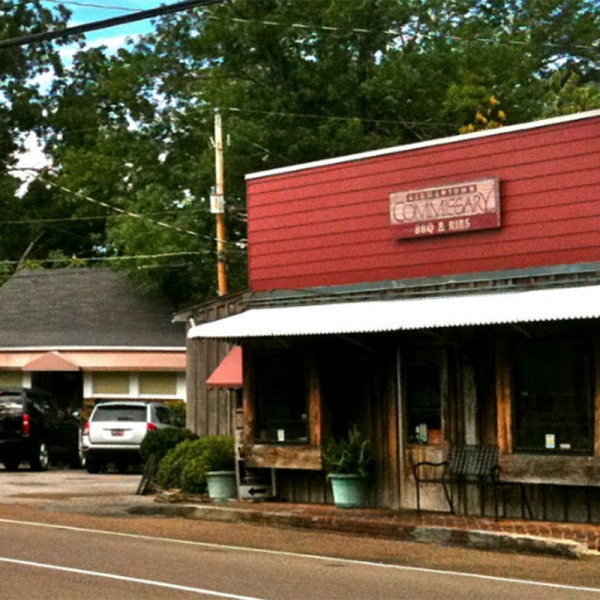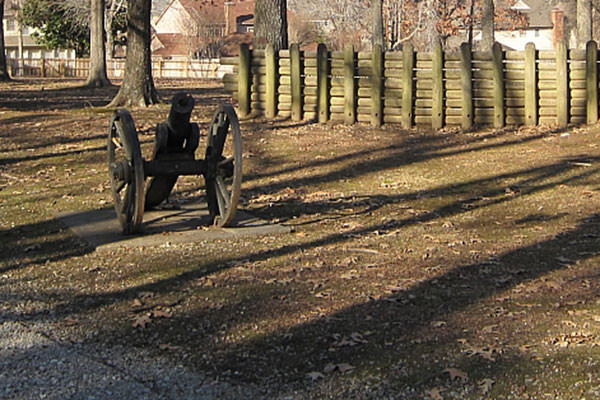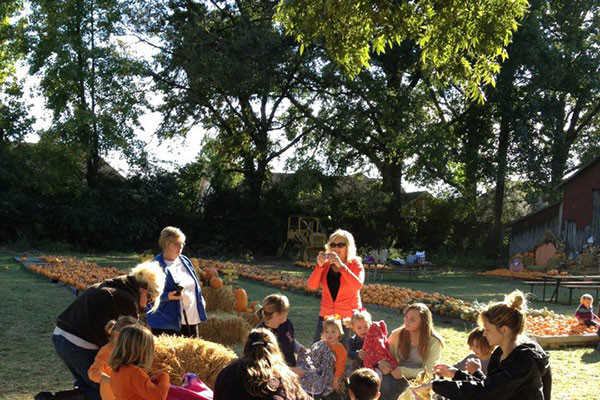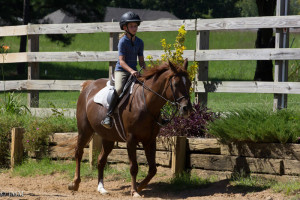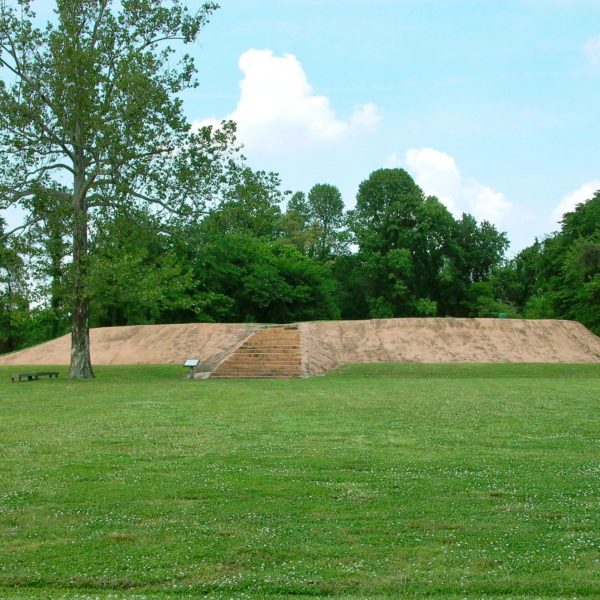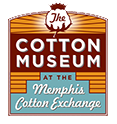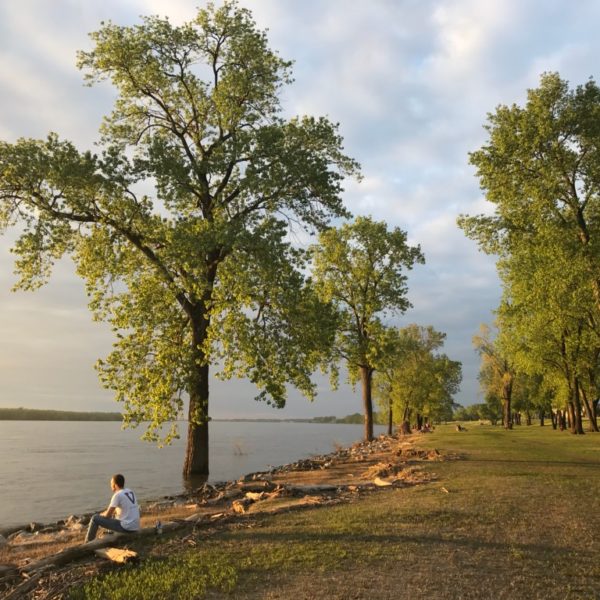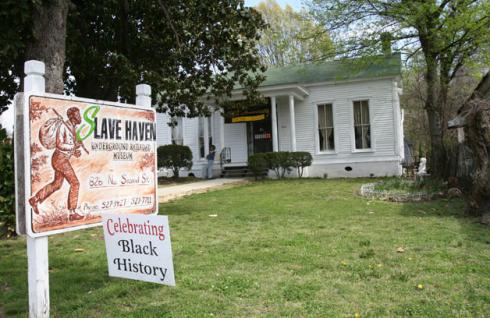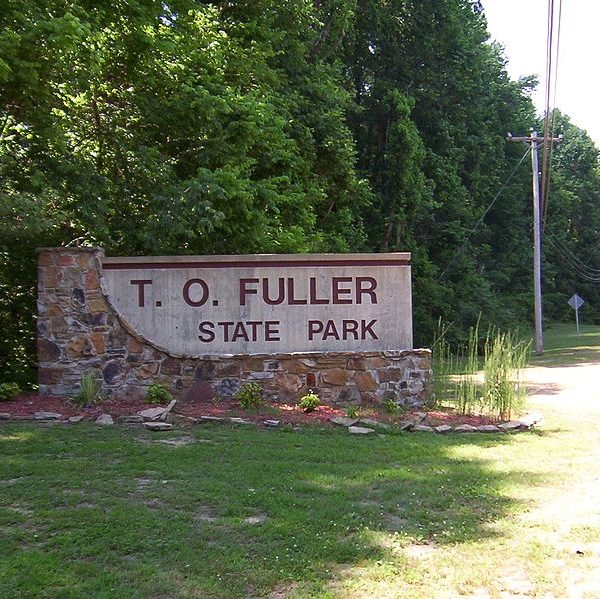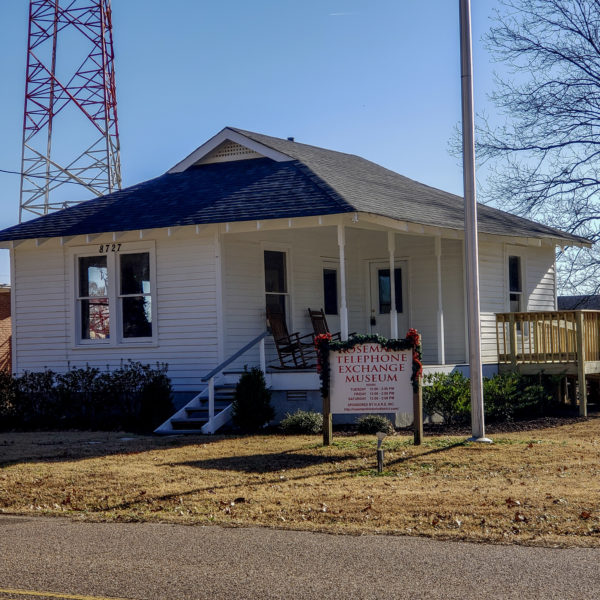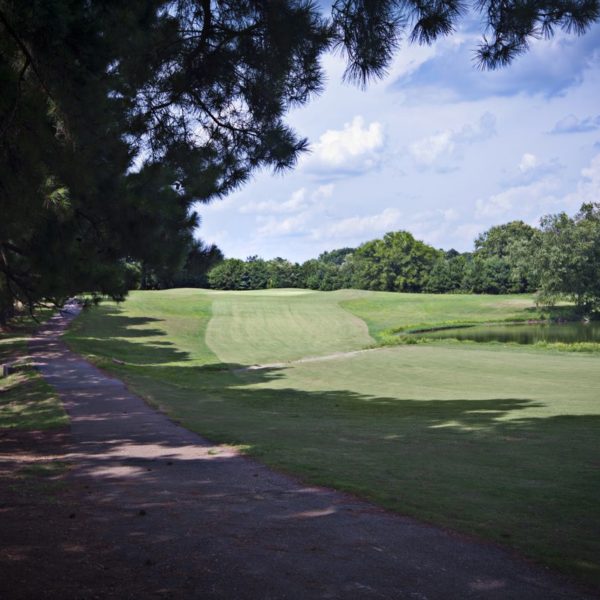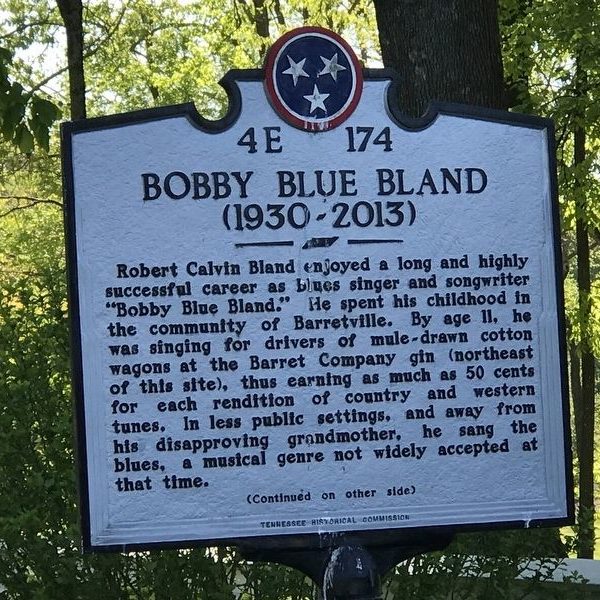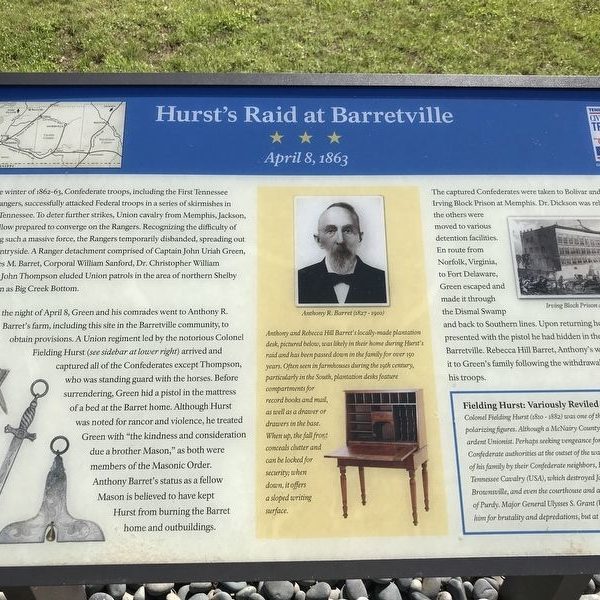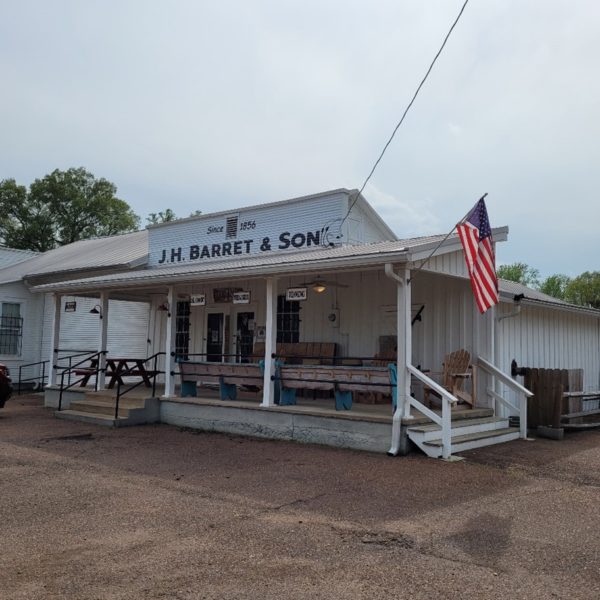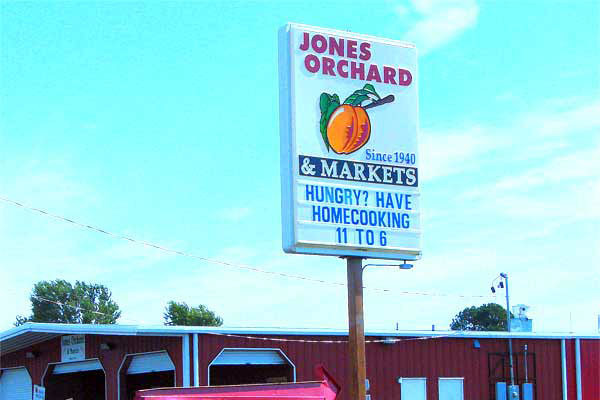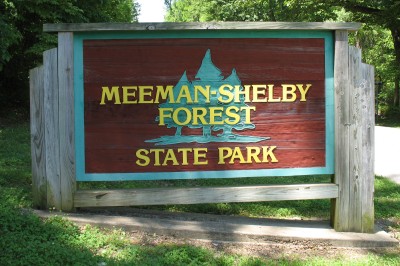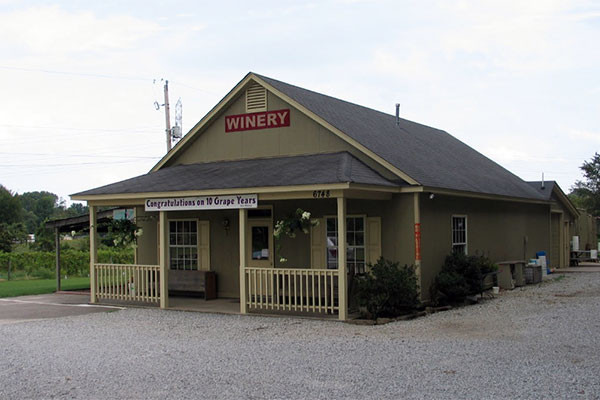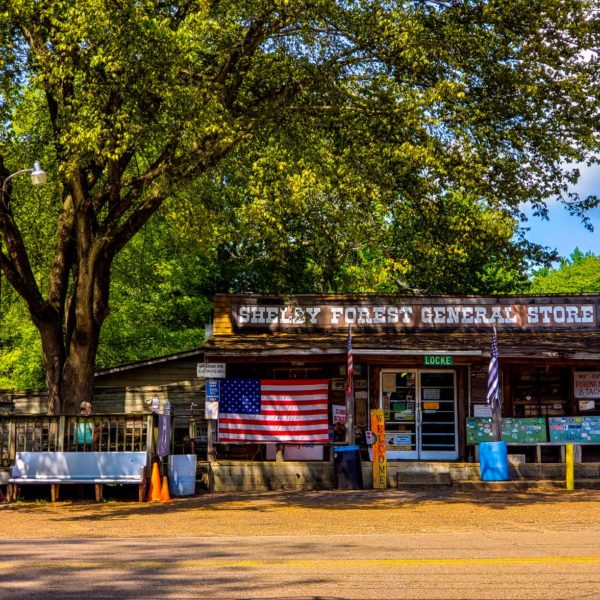So much more than Graceland, Beale Street and Barbeque
Home Memphis, the birthplace of Rock N’ Roll and the #1 place for Barbeque in the US, Shelby County has much more to offer. With a vibrant and rich culture and history that expands past Memphis city limits, you are bound find something for the entire family to enjoy. Whether it’s shopping Parade Magazine’s Best Main Street in Collierville, exploring the oldest home in the county at Davies Manor, or eating the best fried chicken at Gus’s, you are going to love Shelby County. So come take a Day Trip in Shelby County.
Holy Innocents Cemetery and Chapel
According to the town of Arlington website, the Holy Innocents Cemetery was established in 1881 with the burial of a young child. The cemetery was built on the property in 1882. In 1883, Ephraim Edward and Sarah Louisa Butler Greenlee deeded the one-acre lot with the church building and the graveyard to the “Convention of the Protestant Episcopal Church in the Diocese of Tennessee,” reserving the right for themselves and their family to be buried on the property. Members of the some of the founding families of Arlington are buried in the Holy Innocents Cemetery. The last burial in the cemetery occurred in 1987. Once serving as the Diocese of Memphis Episcopal Church, the chapel was destroyed by a storm in 1928 and dismantled in 1929. In 2003 the Diocese of West Tennessee deeded the property to the APTA (Association for the Preservation of Tennessee Antiquities). In 2017 a church replica was built as an open air building utilizing the original window frames from 1800. Today it is used for weddings, teas and prayer services.
Learn moreDepot Square
Shelby County’s best-kept secret, Arlington has remained a small quiet rural town for over 2 centuries. Originally named Haysville, this town was founded in the 1830’s and changed names in 1883 to Arlington by Captain Henry Pitman, who was inspired by Arlington Cemetery in Washington, DC. After the Civil War, Arlington began to grow and develop into a vibrant railroad town. Formerly home to Memphis destination of the Ohio-Memphis Railroad, many of the businesses, homes and restaurants still remain.
Come visit this best-kept secrets small town charm. Head over to Depot Square, the heart of Arlington, where there is an array of shops to explore and historic buildings to see!
Learn moreDavies Manor Historic Site
The Davies Manor Historic Site has an 1807 plantation home that is perhaps the oldest building in all of West Tennessee. It sits on a designated Century Farm, and is certified by the National Wildlife Federation as an official Backyard Wildlife Habitat. The Davies Manor Association has spent years researching the enslaved people who lived and worked at Davies Manor. Their exhibit, Omitted in Mass, comprises twelve panels that explore
the history of slavery and sharecropping at Davies Plantation, as well as other sites owned by members of the Davies family prior to the Civil War. This exhibit earned them two awards from the Tennessee Association of Museums and is available to be viewed in appointment-scheduled tours of the house!
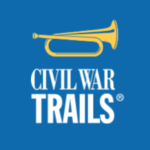
Battle of Collierville Historical Marker
This historical marker recounts the 1863 battle, erected by the Sons of Confederate Veterans Wigfall Greys Camp 1560. The inscription reads:
On Oct. 11, 1863, Gen. James R. Chalmers, with a force of about 3000 Confederate cavalrymen, consisting of the 7th TN, 13th TN, 18th MS, 2nd MO, 2nd AR, and 3rd MS, approached Collierville from the south along Mt. Pleasant Road. Collierville, a Union supply base, was occupied continuously during the war by Union forces, the town being heavily fortified and occupied by the 66th IN Infantry. At this time a battle ensued and the ground was heavily contested. By coincidence, on the same day Maj. Gen. W.T. Sherman was dispatched from Memphis to start his “March to the Sea”.
(Side two):
He was surprised as his train arrived at the height of the battle. Gen. Sherman threw his escort company into the fray and quickly moved to the depot for protection. The Confederates captured his train containing supplies and a number of fine horses including the General’s favorite mare; “Dolly”. The battle continued for about 3 hrs. The Confederates withdrew realizing heavy Union reinforcements were in route. Sherman ordered many of the town’s buildings burned. This engagement was the bloodiest battle of the war in Shelby County. Confederate casualties 51, Union 110.

Chalmers’s Raid Historical Marker
The marker recounts Gen. James R. Chalmers’s raid on Collierville in 1863, erected by Tennessee Civil War Trails. The inscription reads:
Early in November 1863, Union Gen. William T. Sherman was moving east to relieve the Union army at Chattanooga. Confederate Gen. Joseph E. Johnston ordered Gen. James R. Chalmers to “harass [Sherman’s] rear and break the railroad behind him.” Chalmers decided to make a demonstration either at Collierville or Germantown, five miles west of here, to distract Federal cavalry and allow Col. Robert V. Richardson’s brigade to destroy track between La Grange and Corinth.
When Chalmers’s scouts reported that only one Union regiment defended the Memphis and Charleston Railroad at Collierville, he decided to attack the garrison and approached from the south on November 3. The garrison, however, was larger and better armed than the scouts reported. Union Col. Edward Hatch’s cavalry brigade posted at Collierville and Germantown was supported by artillery. At least one unit – the 2nd Iowa Cavalry – was armed with Colt revolving rifles, giving it superior firepower.
When Hatch learned of the Confederate advance, he telegraphed Collierville’s defenders and then rode quickly from Germantown with reinforcements. He struck the Confederates on the flanks shortly after Chalmers began his attack. When Chalmers counterattacked on one flank, the 2nd Iowa Cavalry used its revolving rifles with deadly effect. Chalmers then ordered a retreat, and Hatch pursued the Confederates eight miles to the Coldwater River in Mississippi. The Memphis and Charleston Railroad remained open to Tuscumbia, Alabama, for Union troop movements.
“Mounted and dismounted men of the enemy came forward in fine style, the howitzers of the Second Iowa Cavalry firing rapidly. The regiment, lying on the ground, waited until the enemy’s cavalry were within 50 yards, sprang to their feet, and, with cheers, poured in a severe fire from revolving rifles. … The repulse was thorough.” – Col. Edward Hatch

Collierville Historic Square
Stop and enjoy this charming square, lined with independently owned local businesses like coffee shops, restaurants and bookstores. Visit the log cabin here: it’s an 1851 stage coach rest stop. Walking Tour maps are available from the Main Street Collierville office in the historic Train Depot.
Learn moreThe Collierville Greenbelt System & Johnson Park
With more than 60 miles of trails and sidewalks, this system connects Collierville’s parks, schools, neighborhoods, and commercial districts offering recreation in a natural setting. Start exploring at W.C. Johnson Park where you’ll find natural areas, wetlands, three lakes, elevated boardwalk (.70 miles), a 9-field baseball/softball complex, and multipurpose fields.
Learn moreCollierville Historic Train Depot
This is believed to be the third depot located in Collierville since the Memphis-Charleston Railroad was originally chartered in 1852. Today, the depot is the office for Main Street Collierville, a non-profit group that preserves the area. Pick up a Collierville Historic District Walking Tour brochure here.
Learn moreMagnolia Cemetery
Nestled among the large magnolia trees from which it received its name, this is the final resting place for Civil War soldiers, unknown soldiers and victims of the yellow fever epidemic of the 1870s.
Learn more“Mississippi” Fred McDowell Historical Marker
On your way to Rossville, you’ll pass this marker for one of America’s eminent blues artists, born in Rossville in 1904. His style was rooted in the Delta blues tradition with a signature bottleneck guitar technique. “I make the guitar say what I say,” said McDowell. “If I play ‘Amazing Grace,’ it’ll sing that too.” His influence spread beyond blues to gospel and popular artists.
Learn moreThe Avenue Carriage Crossing
The Avenue offers a dynamic mix of premier national retailers, select local merchants and specialty restaurants in an open-air, pedestrian-friendly setting.
Learn moreRaiding the Rails Historical Marker
The historical marker recounts the significance of the Memphis & Charleston Railroad during the Civil War, erected by Tennessee Civil War Trails. The inscription reads:
During the Civil War, the railroad in front of you was the Memphis & Charleston Railroad. Union forces occupied the area soon after the April 1862 Battle of Shiloh and the capture of Memphis on June 6. they used the railroad to transport troops and supplies east from the city.
On June 22, at a curve in the track to your right, Confederate Col. William H. Jackson’s cavalrymen derailed an entire Federal supply train. This train (the first out of Union-occupied Memphis) was carrying troops and supplies to Union Gen. William T. Sherman’s headquarters at Lafayette (now Rossville). As the train approached, Jackson’s men dislodged a rail, watched the wreck, and then emerged from hiding in the woods. Union Lt. Col. William H. Raynor, 56th Ohio Infantry, reported that they “took Col. [Peter] Kinney, together with 1 sergeant and 8 privates, of Company B, of this regiment, prisoners,” with 73 others. When Sherman learned of this incident, he informed his superiors that Germantown “is a place of mischief. … I am told they openly boast the Yankees will never run a train over the road.”
Persistent attacks by Confederate Gen. Nathan B. Forrest’s command along this vital supply line prompted the establishment of Federal camps to guard it. In 1863, a redoubt was constructed just east of here in another failed attempt to prevent Confederate raids. This derailment was one of several along the line, and one of at least eleven skirmishes in or near Germantown.

Learn more
Germantown Presbyterian Church
The Germantown Presbyterian Church became a Federal hospital and headquarters during the Federal occupation of the city in 1862. For more information, check out Confederate Germantown: Shelby Grays 4th Tennessee Infantry Historical Marker.

Confederate Germantown: Shelby Grays, 4th Tennessee Infantry Historical Marker
Historical marker recounting the 4th Tennessee Infantry, erected by the Tennessee Civil War Trails. The inscription reads:
Although in 1860, Germantown numbered fewer than 300 people, almost every able-bodied man—85 of them—enlisted in the Confederate Army in 1861. They formed the Shelby Grays and were designated Co. A, 4th Tennessee Infantry. The regiment, under Col. Rufus P. Neely, was composed of companies from Collierville, Memphis, Raleigh, and other west Tennessee towns. With great fanfare from Germantown residents, newly sewn flags from the ladies, and a carnival atmosphere, the new unit was mustered into service in May 15, 1861. The men boarded the Memphis & Charleston Railroad train to Memphis and then took a steamboat to the training camp at Fort Wright and then to Fort Pillow.
They first saw action on April 6-7, 1862 at the Battle of Shiloh, where the 4th Tennessee captured a Federal battery at a cost of almost half their 512 men. The regiment, with the Army of Tennessee, later served in the Battles of Perryville (1862), Murfreesboro, Chickamauga (1863), Missionary Ridge, Atlanta (1864), Franklin, and Nashville, where they joined Forrest’s cavalry to fight a successful rearguard action in December 1864.
In January 1865, after a 30-day furlough, the regiment assembled again at West Point, Mississippi. It then rejoined the army under Gen. Joseph E. Johnston and was present at the Battle of Bentonville, North Carolina in March 1865. It surrendered at Greensboro, North Carolina on April 26, and was paroled on May 1. At war’s end only half of Germantown’s Shelby Grays survived to return home and start life anew.
(sidebar)
Pvt. John Anderson Kirby (July 26, 1842-Nov. 19, 1929) was born near Danville, Virginia. His family moved to Germantown early in 1860. He was a bookkeeper in a local store when he enlisted in the Shelby Grays at age 18 in May 1861. He fought at Shiloh on April 6-7, 1862. On November 25, 1863, he was shot in the leg and captured during the Battle of Missionary Ridge, and imprisoned at Rock Island, Illinois. He was later released on parole on April 15, 1865, took a steamboat back to Memphis, and returned to Germantown.

War Comes to Germantown Historical Marker
This marker recounts the Federal occupation of Germantown in 1862. The inscription reads:
Guarding the Railroad
In 1861, Germantown was divided between secessionists and unionists until the news of Fort Sumter and President Abraham Lincoln’s call for volunteers tilted the balance in favor of secession. Germantown women announced on April 26, “We?offer to the (Confederate) soldiers of Germantown all the assistance in our power with our needles, and promise also to aid in the care and sustenance of their families during their absence. And should the war approach our own homes, we will watch over the sick and wounded (through strangers) as our own brothers or fathers.” Local men and other county residents formed the 4th Tennessee Infantry, C.S.A., which trained briefly at Germantown and later fought in such important battles as Shiloh, Chickamauga, and Nashville.
Federal troops entered Germantown in June 1862 and occupied houses, churches, and other buildings. Residents suffered as the soldiers confiscated crops, and livestock, while many dwellings and businesses were dismantled or burned. The Presbyterian church became a Federal hospital and headquarters. The Masonic Hall, also used as a hospital, survived because both the Union commander and the Presbyterian minister were Masons.
The Memphis & Charleston Railroad depot became the focal point of the Federal garrison. The men built an earthen redoubt and stockade just east of town. Confederate cavalry and Union troops fought at least eleven engagements around this rail line in the Germantown area.
By war’s end, Germantown’s population had been reduced by more than half. It would be many years before Germantown recovered and again became a thriving community.

Germantown Train Museum
Housed in the 1948 Germantown Train Depot, this structure replaced the original structure built prior to 1868.
Learn moreOaklawn Garden
This botanical garden is on the site of a historic home and features many historic resources. The beautiful gardens spread across six acres and feature yellow daffodils, pink and red of the blooming azaleas, and blossoming dogwoods among other varieties.
Learn moreGermantown Baptist Church
Now the Water Christian Church, this church was built in 1871 for the New Hope Church congregation that was founded ca. 1835 and is representative of 1870 rural church architecture.
Learn moreGermantown Commissary
For over 25 years, locals have known that this is the place for hickory-smoked, slow-cooked, Memphis-style BBQ and ribs. Voted one of the Top 10 U.S. BBQ Restaurants by Playboy magazine.cals know this is the place for hickory-smoked, slow-cooked, Memphis-style BBQ and ribs. Voted one of the “Top 10 US BBQ Restaurants” by Playboy Magazine.
2290 Germantown Road
Germantown, TN 38138
http://www.commissarybbq.com/
901-754-5540
Fort Germantown
This was the site of a Civil War fort built by the Union Army to guard the Memphis-Charleston Railroad, a vital Confederate supply route. The site is marked by Howitzer cannon replicas. Listed in The National Register of Historic Places, Fort Germantown is now a quiet neighborhood park.

Germantown Depot
Find this 1868 Memphis-Charleston Railroad depot in Old Germantown, situated on high ground where the area’s first settlers made their homes. Today, it’s home to the Tennessee Shakespeare Company, and houses a great collection of railroad memorabilia. Notice the markers identifying the original buildings and sites.
Learn morePriddy Farms
Pumpkins – October; Christmas Trees and greenery, hayrides and train rides – Thankgiving-Christams Eve.
Learn moreDelta Blues Winery
Set on a scenic lake property, the winery offers several varieties of wine cultivated on the grounds and imported from other wineries. They offer wine tastings throughout the day and often feature musical entertainment.
Learn moreLakeland Paintball Park
15 acres of outdoor fields that will allow kids and parents alike to try their hand at paintball.
Learn moreChucalissa Museum & Archaeological Site
Visit the remains of a prehistoric village found during a 1940 swimming pool excavation inside T.O. Fuller State Park. Tour the museum and preserved archaeological dig to learn more about the Chucalissa people – the original Memphi residents – through their pottery, dwellings, weapons, jewelry, and tools. This National Historic Landmark gives you a glimpse into the Mississippian villages Spanish explorer Hernando DeSoto and his party encountered when they arrived near Memphis in mid-1500s.
Learn moreCotton Museum/Memphis Cotton Exchange
Visit this museum in the historic Memphis Cotton Exchange, once the very center of the global cotton trade. Learn about how this simple crop shaped America’s economy, culture, and history, and take the self-guided tour of Cotton Row, the historic block surrounding the museum
Learn moreMississippi River Parks
ASHBURN-COPPOCK PARK OVERLOOK (Riverside Dr.)
This small, shaded park is connected to the South Bluff with a pedestrian bridge. Check out the stone lookout point.
CHICKASAW HERITAGE PARK (Riverside Boulevard & Metal Museum Drive)
Enjoy this city park located on the fourth Chickasaw Bluff, the former site of the Civil War’s Confederate Fort Pickering as well as home to earthen mounds created by pre-historic people.
FOURTH BLUFF PARK (Jefferson Avenue & Court Avenue, Front Street & Riverside Drive)
This park features shade trees and a great overlook, as well as many memorials, plaques, and historical markers, including a statue and memorial to Civil War Confederate President Jefferson Davis.
CRUMP PARK OVERLOOK (Iowa Avenue)
Get a great view of the I-55 bridge from the gravel road through this small, shaded city park.
JEFFERSON DAVIS PARK (Riverside Drive)
Bring your camera for great views of the Mississippi River and Mud Island, and take the learning path to explore the riverbank’s plants and wildlife as well as Civil War and Memphis History.
MARTYRS PARK (Channel 3 Drive)
This city park and memorial within are dedicated to Memphians who risked their lives to stay in the city, tending the sick and burying the dead during the yellow fever epidemic of 1878. From here, catch great views of the Mississippi River.
MISSISSIPPI RIVER GREENBELT PARK (Island Drive)
This low-lying park is long and spacious, with open lawns as well as tall shade trees, perfect for jogging or biking alongside the Mississippi River.
TOM LEE PARK (Riverside Dr.)
Spanning a mile and a half, this park has great views of the river and is the site of Memphis in May, the city’s famous BBQ contest, and other festivals throughout the year. It’s name for Tom Lee, a man who saved 32 people from a sinking steamboat in the 1920s, despite his inability to swim.
VANCE PARK & BUTLER PARK (Vance Avenue & Butler Avenue)
Take in the incredible views atop the Mississippi River bluffs at this pair of beautifully landscaped parks.
Learn more
Slave Haven Museum
This 1849 clapboard house served as a way station on the Underground Railroad, a secret series of hiding places for runaway slaves seeking freedom in the North and Canada. Take the tour and visit the hidden tunnels, trap doors, and cellars where slaves waited for their chance to escape to the Mississippi River on their way to the next secret stop. The house is furnished with period pieces and slavery artifacts. Hours vary; call ahead for information.
Learn moreT. O. Fuller State Park
This 1,100-acre state park, located within the Memphis city limits, offers camping, hiking and picnicking. Birdwatchers and wildlife lovers will be right at home here. This was the first state park east of the Mississippi to be open to African Americans, and only the second in the U.S.; it is named for Thomas O. Fuller, a prominent African American educator, pastor, politician, civic leader and author.
Learn moreRosemark Telephone Exchange
The Rosemark Telephone Exchange tells the story of the Rosemark Telephone Company which was incorporated on December 9, 1911. Step back in time and sit at the “switchboard” that the operator used to connect phone lines for over 50 years.
Learn moreEdmund Orgill Park and Golf Course
The Edmund Orgill Park offers fishing, disc golf right, and picnic pavilions. The 6,436 yard, Par 72 yard course, established in 1972, is suitable for every skill level. The course was also listed among Golf Advisor’s Top 25 Most Improved Course List for 2016.
Learn moreBobby Blue Bland Historical Marker
The historical marker reads:
Robert Calvin Bland enjoyed a long and highly successful career as blues singer and songwriter “Bobby Blue Bland.” He spent his childhood in the community of Barretville. By age 11, he was singing for drivers of mule-drawn cotton wagons at the Barret Company gin (northeast of this site), thus earning as much as 50 cents for each rendition of country and western tunes. In less public settings, and away from his disapproving grandmother, he sang the blues, a musical genre not widely accepted at that time.
At age 17, Bland moved with his family to Memphis. He performed the blues on Beale Street and in juke joints before having his first hit single, “Farther on Up the Road,” on rhythm and blues charts. Bland received a Grammy Lifetime Achievement Award and was inducted into the Blues Hall of Fame and the Rock and Roll Hall of Fame. The New York Times hailed him as “a debonair balladeer whose sophisticated, emotionally fraught performances helped modernize the blues.”
Learn moreHurst’s Raid at Barretville Historical Marker
During the winter of 1862-63, Confederate troops, including the First Tennessee Partisan Rangers, successfully attacked Federal troops in a series of skirmishes in southwest Tennessee.

Barretville General Store
This ca. 1920 store was established by Paul Barret, a Shelby County banker, merchant, planter, businessman, and political and civic leader. One of the oldest continually operating businesses in the county, the store offers homestyle meals and homemade desserts, along with locally made goods to take home
Learn moreMirimichi Golf Course
A premier golf course with scenic hills, the par 72 championship course is 7,400 yards from the tips and provides five to eight different sets of tees.
Learn moreJones Orchard Market & Kitchen
This is the spot where the Jones Orchard jams, jellies, and relishes are made in small batches from fruit grown on the nearby farm. Stop in for a home-cooked meal and a jar of jelly to take home.
Learn moreMeeman-Shelby Forest State Park
Over 13,000 acres atop the third Chickasaw Bluff are yours to explore in this scenic state park in the bottomland hardwood forest. Take a break among the oak, cypress, and tupelo trees to fish, hike, picnic, or enjoy the wildlife for a day or overnight camping and vacation cabins are available. Don’t miss the nature center on Piersol Lake, the oldest man-made lake in the state; you’ll find hands-on exhibits and come face to face with some of the park’s wildlife.
Learn moreOld Millington Vineyard & Winery
Just 14 miles north of Memphis, this country winery produces award-winning wines. Stop in to taste reds, whites, ports and fruit wines, and spend time in the peaceful countryside. From April through October, catch live outdoor concerts most Sunday afternoons.
Learn moreShelby Forest General Store
This store was built in 1934 and is known for fresh-made biscuits and world-famous cheeseburgers, live music on weekends and an authentic general store experience. This is the kind of place where locals gather for coffee on the front porch, and its also a favorite hangout of Millington’s famous son, musician/actor Justin Timberlake.
Learn more